
Hermann Katy Hospital Celebrates Another Expansion Milestone
pg. 8
Oncology Research pg.3
Mental Health pg.4
Legal Matters pg.5
Hospital News pg.6
The Framework pg.10
Financial Forecast pg.12

pg. 9


Hermann Katy Hospital Celebrates Another Expansion Milestone
pg. 8
Oncology Research pg.3
Mental Health pg.4
Legal Matters pg.5
Hospital News pg.6
The Framework pg.10
Financial Forecast pg.12

pg. 9
By Shannon Barghols American Heart Association
Nineout of ten people who suffer cardiac arrest outside of the hospital die. In most of those cases, bystander CPR was not performed. That is why the American Heart Association (AHA) is broadening efforts to drive CPR education, awareness and community initiatives through the Heart Walk, the Association’s largest community facing initiative. Through fundraising, community education and corporate engagement, the Heart Walk aims to enhance CPR training accessibility, bolster bystander preparedness, increase funding for vital research, and save and improve lives from cardiovascular disease, the number one killer in Houston.
On Saturday, October 26, beginning at 8 a.m., more than 8,000 Houstonians will participate in the Houston Heart Walk. This free event takes place at Helix Park in The Texas Medical Center (7318 Robertson Road, Houston). Free parking is available in the green garage.
This year’s Houston Heart Walk Chairperson is Dr. Esmaeil Porsa, President and Chief Executive Officer for Harris Health. Dr. Porsa has a special interest in improving community health by addressing social determinants of health. Through his role with the Houston Heart Walk, he is dedicated to bringing awareness to the importance of heart disease and stroke prevention to all Houstonians.

This focused effort will support AHA’s efforts to turn a nation of bystanders into a Nation of Lifesavers,” said Dr. Porsa. “As the 2024 Houston Heart Walk Chair, I look forward to connecting, learning and spreading important resources to improve the overall health of our community for generations to come.”
The impact of the Houston Heart Walk extends beyond the day of the
the readiness of our community can be the difference between life and death. CPR, especially if performed immediately, could double or triple a person’s chance of survival. “Our goal is to have one person in every household confident, prepared and equipped to perform CPR,” stated Allison Sheeder, Regional Senior Vice President and Senior Executive Director of the American Heart Association for Greater Houston.
The Houston Heart Walk will broaden its impact by driving bystander CPR initiatives... to turn a nation of bystanders into a Nation of Lifesavers —Dr. Porsa
“The Houston Heart Walk will broaden its impact by driving bystander CPR initiatives in our community.
event. Participants will play a crucial role in AHA’s Nation of Lifesavers™ initiative, a national effort aimed at doubling cardiac arrest survival rates by 2030. Cardiac arrests happen at work, in homes, on athletic fields and in neighborhoods everywhere, and
Sheeder noted, “This year we have corporate teams for the Heart Walk from companies including AT&T, Enterprise Rent a Car, TechnipFMC, Harris Health, HCA Houston Healthcare, Houston Methodist, and St. Luke’s Health.” She also highlighted sponsors, such as HCHD Foundation, MRC Global, TechnipFMC, Oceaneering, Corebridge, HCA Houston Healthcare, Blue Cross/Blue Shield of Texas,





























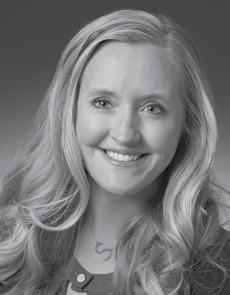
By Stacia Pfost, M.D., Texas Breast Specialists Houston Medical Center and Sugar Land
of developing breast cancer. Women younger than 45 may be at higher risk if they have one or more of the following genetic or biological factors:
• Close relatives who were diagnosed with breast cancer before age 45, especially if more than one relative was diagnosed or a male relative had breast cancer.

cancer affects one in eight women, and incidence rates are on the rise for those in their late 20s, 30s, and early 40s. While there is no surefire way to prevent breast cancer, understanding your risk and taking proactive steps today can make all the difference tomorrow. Remember that having one risk factor, or even several, does not mean you will have breast cancer, and women with no risk factors can still develop breast cancer.
Certain factors that cannot be changed, such as your family history, can increase the likelihood
• Personal or family history of ovarian cancer.
• Changes in certain breast cancer genes (BRCA1 and BRCA2) or close relatives with these changes.
• Ashkenazi Jewish heritage.
• Radiation therapy to the breast or chest during childhood or early adulthood.
• Previous breast cancer diagnosis or certain other breast health issues, such as lobular carcinoma in situ (LCIS), ductal carcinoma in situ (DCIS), atypical ductal hyperplasia, or atypical lobular hyperplasia.
• Dense breasts as seen on a
mammogram.
• Reproductive history resulting in increased exposure to estrogen such as starting menstruation before age 12 or menopause after age 55, having your first child after age 30, or never having children.
• Exposure to medications that use hormones, such as certain types of birth control or hormone replacement therapy.
Learning about your family history, undergoing genetic risk evaluation and testing, and going to your annual physical can help you understand which genetic or biological risk factors may affect you.
Environmental or non-genetic risk factors, such as diet and physical activity, are linked to 40% of cancer cases and almost half of all cancer deaths in the U.S. Speak with your physician about what changes you can make to reduce your risk.
• A diet high in foods like red meat or ultra-processed food can increase breast cancer risk among premenopausal women. However, substituting legumes for one serving of meat per day can lower
Oncology ...page 14

By University of Texas Medical Branch
Two youth mental health intervention programs available through the University of Texas Medical Branch Department of Psychiatry and Behavioral Sciences are seeking eligible participants.
Running through the Department’s research networks, the Trauma Focused Cognitive Behavioral Therapy and the Behavioral Activation programs are free and designed for eligible participants between the ages of eight and 20 who are not currently dealing with a mental health emergency such as psychosis or immediately suicidal thoughts.
“You don’t have to have a mental health diagnosis or any prior experience with a mental health care provider to participate,” said Dr. Kimberly Gushanas, licensed clinical psychologist with the Department.
The programs vary in focus, with
one providing free trauma-focused cognitive behavioral therapy for youth who have developed PTSD symptoms after experiencing something traumatic, while the other is a free coaching program for depressed teenagers.
Both, however, are helping mental health professionals like Gushanas better understand how to help children facing these life experiences.
While the work being done is research based, Gushanas points out that it’s not experimental and they have proof these treatments work.
“The research we are doing through these programs is call ‘observational’ meaning we are just observing and making scientific notes about patterns and what commonly happens in the mind and body in youth who experience a trauma or deal with depression or suicidality,” she said. “We hope to use this data to be able to predict and prevent serious mental


physical health issues so that we can get kids the help they need earlier and with less difficulty.”
Information about the programs and how to participate is available online. Additionally, individuals can call to ask questions about participating or self-refer by contacting the department’s research coordinator via email at psych.research@utmb.edu
or by calling 409-747-8352.
“Youth who have experienced a trauma or who are dealing with depression are at higher risk for suicide,” said Gushanas, acknowledging that September is Suicide Awareness Month. “It’s vital children in those groups and the adults who support them are made aware of these resources.”


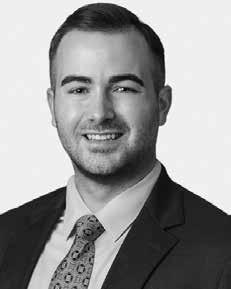
By Derek A. McKee, J.D. Polsinelli, PC
The U.S. Court of Appeals for the Fifth Circuit recently confirmed that the United States Department of Labor (“DOL”) has the authority to use a salary basis to define its white-collar overtime exemptions. This is a big win for the DOL as it is presently defending its latest increase to the minimum salary thresholds for executive, administrative, and professional exemptions under the Fair Labor Standards Act (“FLSA”), also known as the FLSA’s “white-collar exemptions”, in the Eastern and Northern Districts of Texas.
For medical practice admin-
istrators and medical practitioners alike, this news should strongly encourage you to seek counsel about the compensation of your exempt employees to ensure you are prepared to comply with the new salary thresholds announced by the DOL earlier this year.
In Mayfield v. U.S. Department of Labor, a unanimous three-judge panel of the Fifth Circuit provided that the DOL has the authority to “define and delimit” an exemption from overtime pay under the FLSA. In so ruling, the Court affirmed the dismissal of a lawsuit initiated by a Texas fast-food operator, Robert Mayfield, who claimed Congress never authorized the DOL to use salaries as a test for whether workers have managerial duties.
The Court rejected Mayfield’s argument. In response, the Fifth Circuit wrote that “[d]istinctions based on salary level are ... consistent with

the FLSA’s broader structure, which sets out a series of salary protections for workers that common sense indicates are unnecessary for highly paid employees.” Upon issuing the Mayfield decision, the 5th Circuit joined the four other federal appeals courts who have considered this issue previously (including the D.C. Circuit, the 2nd Circuit, the 6th Circuit, and the 10th Circuit).
The 2024 DOL rule effectively focused on three main points. First, it raised the minimum weekly salary to qualify for the FLSA’s white-collar exemptions from $684 per week to

$844 per week (equivalent to a $43,888 annual salary) on July 1, 2024. Second, it called for another increase of the minimum weekly salary to $1,128 per week (equivalent of a $58,656 annual salary), on January 1, 2025. Third, under the 2024 DOL rule, the above salary threshold would increase every three years based on recent wage data. As mentioned above, the Mayfield decision comes at a time when the DOL is defending its recent 2024 rule increasing the salary thresholds for white-collar exemptions
see Legal Matters ...page 13



Haris Kamal, MD, a stroke specialist and neurointerventional surgeon with board certifications in general neurology, vascular neurology and neurocritical care, has joined Memorial Hermann’s Mischer Neuroscience Associates in The

Woodlands.
In practice since 2016, Dr. Kamal treats patients of all ages. His primary clinical interests include medical and interventional management of ischemic stroke, hemorrhagic stroke, brain aneurysm, brain arteriovenous malformations, arteriovenous fistulas, subdural hematoma, intracerebral hemorrhage, subarachnoid hemorrhage, carotid and vertebral stenosis and stenting, intracranial atherosclerosis and interventional procedures for the spine such as kyphoplasty. He is fluent in Hindi and Urdu.
Dr. Kamal earned his medical degree from Yerevan State Medical University in Armenia. After completing an internship at E.S.I. Post Graduate Institute of Medical Science and Research in New Delhi, India, he
pursued a neurology residency at the State University of New York at Buffalo, a fellowship in vascular neurology at McGovern Medical School at UTHealth Houston and a fellowship in neuro-endovascular surgery at New York Medical College-Westchester Medical Center.
A widely published author and presenter, Dr. Kamal is editor of Biomed Research International Stroke and Neurointervention: Concepts & Updates; Journal of Neurology, Psychiatry and Brain Research; Journal of Advances in Spine Research; and the International Journal of Cerebrovascular Disease and Stroke and serves as a reviewer for the professional journals Stroke, Neurology and Interventional Neurology. He also is a member of the American Heart Association,

American Stroke Association, Neurocritical Care Society and American Association of Neurology.
HCAHouston Healthcare
Clear Lake ranked No. 10 in the Greater Houston region among U.S. News’ 2024-2025 edition of Best Hospitals. Additionally, the hospital was named a High Performing hospital for seven procedures and conditions including Congestive Heart Failure, COPD, Diabetes, Heart Attack, Kidney Failure, Pneumonia and Stroke. This is the highest distinction a hospital can earn for U.S. News’ Best Hospitals Procedures & Conditions ratings.
“HCA Houston Healthcare Clear Lake is proud to be recognized as one of the best hospitals in Greater Houston and to be named as a High Performing hospital in seven procedures and conditions,
which highlights our expertise and commitment to patient well-being,” said Todd Caliva, chief executive officer. “I am honored to work with a great group of healthcare professionals who are truly committed to delivering world class care to our patients! This profession is about commitment, teamwork and compassion and I feel very fortunate to work with colleagues who share our values.”
U.S. News evaluated nearly 5,000 hospitals across 15 specialties and 20 procedures and conditions; only 11% of evaluated hospitals earned a Best Hospitals ranking. Hospitals awarded a “Best” designation excelled at factors such as clinical outcomes, level of nursing care and patient experience. The annual Procedures & Conditions ratings are designed
to assist patients and their health care providers in making informed decisions about where to receive care for challenging health conditions or elective procedures.
“For 35 years, U.S. News has been a leading resource for patients navigating their health care decisions,” said Ben Harder, chief of health analysis and managing editor at U.S. News. “A ‘Best Hospital’ recognition empowers patients to seek out medical care from the best of the best to treat their illness or condition. Additionally, the ‘High Performing” designation acknowledges hospitals that consistently deliver high-quality care for specific medical procedures and conditions.”
To calculate the Best Hospitals rankings, U.S. News evaluated each hospital’s performance on objective
measures such as risk-adjusted mortality rates, preventable complications and level of nursing care. The Best Hospitals Specialty rankings methodology and Procedures & Conditions ratings methodology measure patient outcomes using data from millions of records provided by the Centers for Medicare & Medicaid Services. This year, among other methodology refinements, U.S. News incorporated new data on care provided to patients with Medicare Advantage insurance and on care provided to outpatients, nearly doubling the number of patients included in its annual data analysis. The Procedures & Conditions ratings are based entirely on objective quality measures.

MemorialHermann Katy Hospital celebrated the upcoming opening of its expanded Emergency Center and Surgical Department yesterday with a ribbon cutting and open house.
“Today we celebrate and recognize the culmination of many months of planning and countless hours of preparation to make these units a reality,” said Jerry Ashworth, senior vice president and CEO of Memorial Hermann Katy and Memorial Hermann Cypress hospitals. “Across the Memorial Hermann Health System, we work every day to create healthier communities through personalized care. I cannot think of a better way to provide personalized care to the patients of the Katy area and beyond than through this much needed expansion.
In Phase I, the Emergency Center doubled in size to 40,000 square feet and added additional treatment rooms, including two state-of-the-art trauma rooms, an additional CT scanner, upgraded equipment and more.
Additionally, the project added three operating rooms, with shell space to add up to three more. Phase II will include renovations to the existing Emergency Center and is expected to be finished in late summer 2025. HKS Architects, M Strategic Partners and Tellepsen are partners on the project.
“Memorial Hermann Katy is currently a Level III Trauma Center and will pursue a Level II Trauma Center designation in the near future due to increasing volumes and the need for a higher-level of trauma care in the community,” said Vivien Bond, chief operating officer for Memorial Hermann Katy, who is managing the expansion project. “Our newly expanded units are key components of the journey to becoming a Level II Trauma Center.”
These projects are part of the hospital’s ongoing $167 million expansion, which has added significant capacity and specialty services on the campus. Highlights of completed
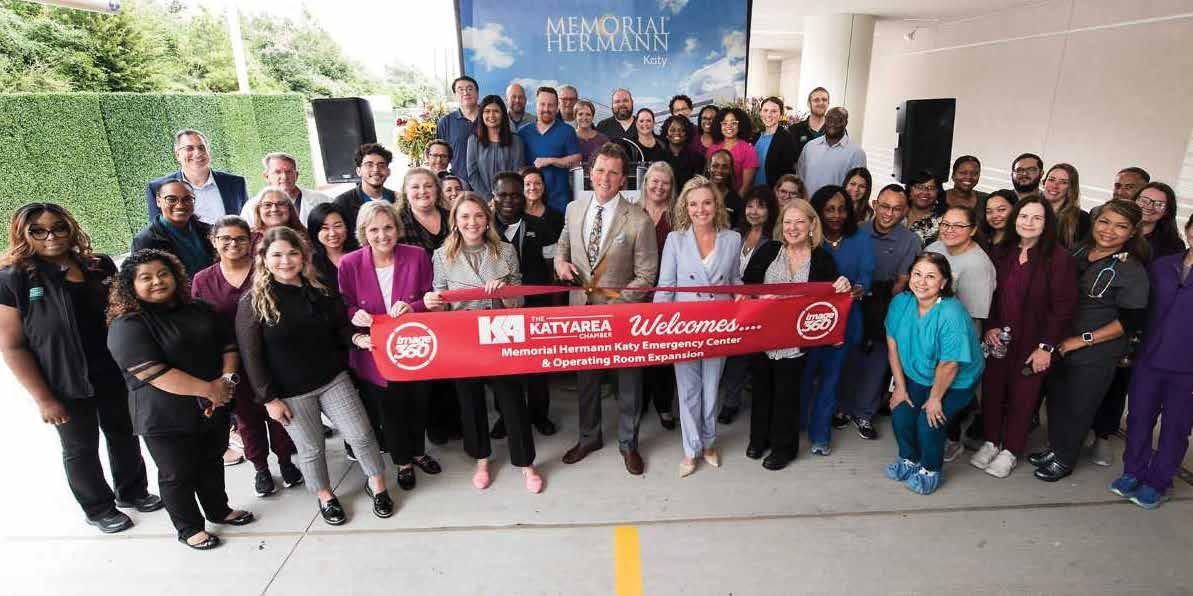
projects include:
• Katy’s only Pediatric Intermediate Care Unit (IMU) and a 40-bed adult IMU, accommodating patients with more severe illnesses or injuries
• 40-bed medical/surgical acute care unit that serves a variety of patients including those who are recovering from surgery or have an acute illness
• A new parking garage that added almost 700 parking spaces on the west side of the campus
• Medical Plaza III that will house clinical office space for affiliated physicians, as well as enhanced pediatric services, including pediatric rehabilitation and pediatric imaging services. The
As one of the largest healthcare property owners in the region, Healthpeak focuses on operational expertise and an entrepreneurial approach to create an environment where patients and physicians alike can focus on healing.
building is complete and ready for tenant build-out.
• The relocation and expansion of the nursery, including the addition of four neonatal intensive care unit rooms
• Expansion of the cardiac catheterization lab
• Expansion of food services
Other projects in the works include an overhaul of Women’s Services, including doubling the number of obstetrical emergency rooms and adding labor and delivery rooms and a cesarean section suite.
By Susan G Komen
Black women in the U.S. are about 40% more likely to die from breast cancer than white women, and they are also more likely to be diagnosed at a younger age with more aggressive forms of the disease. In fact, the USPSTF (United States Preventative Services Task Force) acknowledged that Black women may need a different screening strategy because they are often diagnosed with breast cancer at younger ages. While recommendations like these require ongoing research, Susan G. Komen®, the world’s leading breast cancer organization, is working proactively to address these disparities through targeted research, community outreach and advocacy, to save more lives today.
In 2015, Komen launched the program Stand for H.E.R. –A Health Equity Revolution, to improve breast health equity for Black women by identifying and addressing the systemic barriers that drive differences in breast cancer outcomes. The program was developed to reduce breast cancer disparities experienced by Black women starting in the 10 U.S. metropolitan areas where the inequities are greatest: Atlanta, GA; Chicago, IL; Dallas-Fort Worth, TX; Houston, TX; Los Angeles, CA; Memphis, TN; Philadelphia, PA; St. Louis, MO; Virginia Beach, VA; and Washington, DC. The work continues in these cities, and Komen also addresses breast health inequities in Black communities nationwide.

Through Stand for H.E.R., Komen is working to implement a comprehensive approach that includes five key health equity drivers to create change:
• Education that equips specific groups and communities with knowledge about breast health
• Patient support that ensures connections to timely, high-quality care
• Workforce development that improves diversity and cultural sensitivity of health care workers
• Public policy and advocacy that promote health equity
• Research that is representative and benefits all
By leveraging this approach through Stand for H.E.R., Komen is committed to collaborating with Black communities, policymakers, researchers and other key allies to help create a world without inequities, where Black people have the same chances of surviving breast cancer as anyone else.
Education Studies suggest that a failure to successfully educate people about breast health may result in delayed screening and diagnosis of breast cancer, and this delayed
Houston Methodist West Hospital is proud to announce a $247 million expansion project, scheduled to commence this fall with anticipated completion by 2027. This project, including the $185 million for hospital expansion and $62 million for community expansion, emphasizes Houston Methodist’s commitment to meeting the growing health care needs of West Houston, particularly in Katy and its surrounding areas, as one of Texas’ fastest-growing regions. This initiative marks one of the largest expansion projects in Houston Methodist West Hospital’s 14-year history.
“We are embarking on this expansion journey with great enthusiasm, reaffirming our dedication to serving the evolving
needs of our community,” said Wayne M. Voss, CEO of Houston Methodist West Hospital. “This project will significantly elevate our capacity to deliver exceptional care, close to home.”
Hospital Expansion:
The expansion encompasses over 129,000 square feet of new and renovated service areas. Key enhancements include:
• Clinical Areas: A 36-bed observation unit, increasing the hospital’s total bed count to 307. Four state-of-the-art operating rooms (ORs), 16 additional emergency department (ED) rooms, five new neonatal intensive care unit (NICU) beds, and a new endoscopy suite. This expansion will also include an infusion center with

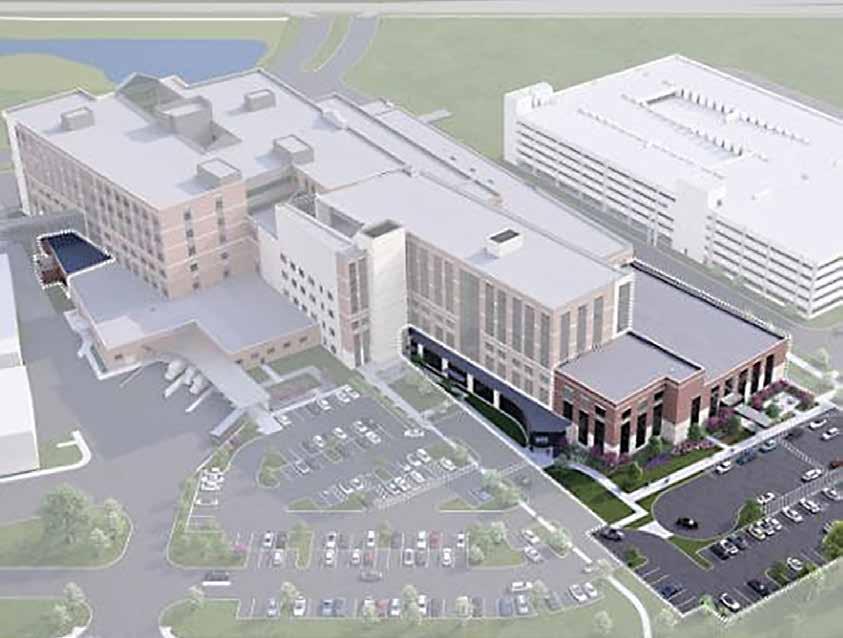
six additional suites, and advanced imaging equipment featuring one MRI, two CT scanners, and ultrasound (US).
• Patient and Visitor Services: Enhancements feature a new
24/7 giftshop with grab and go options, Einstein’s Bagels location and significant upgrades to the current coffee




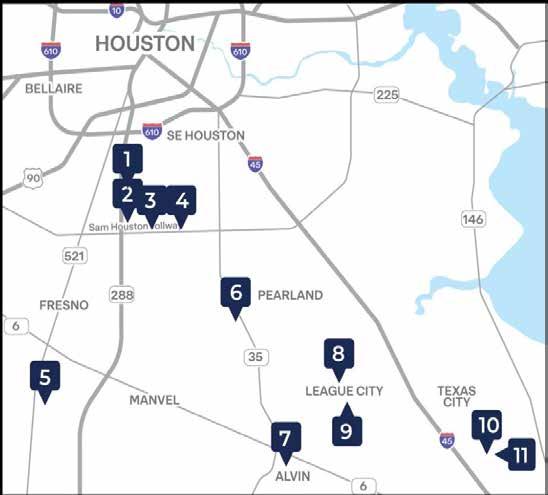

Dr. Mehrzad Zarghouni, Interventional Radiologist and founder of Houston Vein and Vascular.
Houston Vein and Vascular is excited to announce a new treatment option for patients with complex Peripheral Artery Disease (PAD). By offering Percutaneous Transmural Arterial Bypass (PTAB) with the DETOUR System, our team of experts can provide another option for patients with long lesions in their superficial femoral artery (SFA). We are proud to bring this innovative technology to our community and look forward to helping patients with complex PAD.
The DETOUR System, which earned Breakthrough Device Designation from the FDA in 2020 and recently received approval from the FDA in June 2023, is designed specifically for patients with severe PAD in the superficial femoral artery (SFA). These patients include those who have long obstructions in the SFA, those with previously failed endovascular procedures, and those who may not be good candidates for surgical bypass.
The development of the DETOUR System has been guided by data, including two multi-center, international studies. Clinical evidence demonstrates PTAB, using the DETOUR System, is an effective treatment option for patients with long complex SFA disease.
“Our hospital is committed to providing the latest treatment options for our patients with PAD,” said Dr. Mehrzad Zarghouni, Interventional Radiologist At Houston Vein and Vascular. “We are excited to offer PTAB with the DETOUR System, which can help provide an alternative treatment option for patients.”
For more information about PTAB with the DETOUR System, please contact Houston Vein and Vascular at 832-350-7260. About Houston Vein and Vascular
Houston Vein and Vascular is a leading healthcare provider in Houston, TX, dedicated to delivering the highest quality patient care. Our team of experienced physicians and healthcare professionals is committed to providing innovative and effective treatments for a wide range of medical conditions.


Develop advanced technical and professional skills to make a difference in your career!
APPLIED CHEMICAL SCIENCES
BIOSCIENCE & HEALTH POLICY
ENVIRONMENTAL ANALYSIS
ENERGY GEOSCIENCE SPACE STUDIES
Dear Doctors and Staff,
Let us take the guesswork out of fracture referrals.
No more waiting for appointments!
We at the Orthopedic Care Center wish to offer your patients and staff easy scheduling of patients.
Our office has extended office hours on Fridays to accommodate patients with fractures.
On behalf of the Orthopedic Care Center
Lubor Jarolimek M.D.





We can help value, market and sell your property! ► www.piersoncommercial.com ► 281.915.7049 ► john@piersoncommercial.com
►John DelaRosa Principal/Broker

MBy Grace S. Yung, CFP Midtown Financial Group, LLC
any are fortunate enough to have access to and can participate in a 401(K) plan at work. These employer-sponsored plans are powerful savings tools, given their tax advantages, along with the potential for “free money” via company matching contributions.
Typically, when you’re saving money for long-term goals like retirement, the recommended approach is not to tap into it
borrowers are usually charged interest. So, depending on the rate you are charged, this could be an expensive way to obtain needed funds. This said however, you are paying yourself back versus paying an institution. There is also a specified amount of time in which to pay off the loan balance. Additionally, if you leave your employer, typically you will be required to repay the 401(k) loan in full. Otherwise, the loan will be considered in default.
According to the IRS, hardship withdrawals from a 401(k) plan are only allowed when the participant has an “immediate and heavy financial need.” For example, some of the scenarios that may qualify for a 401(k)-hardship withdrawal are:



prematurely. This is because one of the biggest benefits of investing in a 401(k) plan, besides lowering your taxable income with your contributions, is the ability to grow your savings tax-deferred. This is particularly true if those funds will be in the account for a long period of time and can take advantage of the power of compounding.
However, in some cases, there are instances where it may make sense to consider a loan or hardship withdrawal from your 401(K).
Per IRS guidelines, typically you can access up to 50% of the vested account balance, or $50,000, whichever is less. Because you are borrowing these funds, there are no taxes due on the money you receive.
But like other types of loans,
• Medical necessity (i.e., the cost of a necessary surgery that is not covered by insurance)
• Certain repairs of damage to the plan participant’s personal residence
• Tuition and various other educational expenses for 12 months of post-secondary education for the participant, their spouse, or other qualifying dependent(s)
When taking a 401(k) hardship withdrawal, if you are under age 59 ½, the 10% IRS early withdrawal penalty won’t apply. However, the funds that you take out of the plan will still be subject to ordinary income tax.
As with most financial transactions, there can be advantages and drawbacks for both 401(k) loan
13
Continued from page 5
in both the Eastern and Northern Districts of Texas. Indeed, the Mayfield decision could not have come at a more opportune time for the DOL because it supplies these Texas federal judges with new direction from the Fifth Circuit to consider when making their rulings. What Does this Mean for Medical Practices and Medical Practitioners?
The Mayfield decision bolsters the DOL in its bid to set and increase the minimum salary requirements for
Continued from page 9
diagnosis contributes to higher rates of advanced breast cancers and mortality in the Black community. Through Stand for H.E.R., Komen has developed culturally relevant and responsive educational resources and programs to equip Black people with accurate knowledge about breast health.
Patient Support
Komen’s Patient Care Center (PCC) works to overcome many of the barriers experienced by the Black community by providing individualized, direct patient care and support. The Komen Patient Care Center can help meet the needs of anyone impacted by breast
cancer. Komen navigators offer free, personalized navigation services to patients, caregivers and family members, including breast health and breast cancer information, access to services and resources, emotional support and more. Get connected with a Komen navigator at 1-877-GO KOMEN or helpline@ komen.org
Workforce Development
A diverse health care workforce has been proven to increase access to health care for communities of color. Komen leads the way with training programs led by experts in the field to prepare the next generation of health
Continued from page 12
and hardship withdrawal scenarios. On the plus side for 401(k) loans, you will not owe any taxes or incur an IRS 10% early withdrawal penalty. Also, the interest paid on the loan will go back into your account and missed loan payments will not impact your credit score.
Potential negatives to keep in mind include missing out on the potential growth that could amount to more than the interest you pay back
its white-collar overtime exemptions, which will certainly pose challenges for employers in creating compliant employee compensation structures. If the 2024 DOL rule goes into effect, employers will need to substantially raise their exempt employees’ salaries to ensure they remain properly exempt from the overtime provisions of the FLSA. Because medical practice compensation models often have exempt, salaried employees within their ranks, now is the time to talk to an employment attorney regarding compliance with the DOL’s salary threshold. Failure to be prepared on these increases could jeopardize your employee’s exempt status under the FLSA, which can greatly increase the likelihood of costly unpaid wage claims and/or overtime claims.
heads in the sand is not the best course of action in defending employment-related claims, particularly those regarding something as concrete as a salary threshold.
into the account, having to repay the loan in full immediately if you leave your job or being considered in default if you do not repay the loan.
Some key advantages of 401(K) hardship withdrawals include no 10% IRS early withdrawal penalty if exceptions are met and no requirement to repay the withdrawn funds. Conversely, some downside for 401(k) hardship withdrawals to consider would be withdrawals are
Take it from someone who regularly works on wage and hour matters—sticking our metaphorical
care leaders – from breast cancer researchers to patient navigators –who are representative of diverse populations.
Public Policy and Advocacy
Komen’s Center for Public Policy is the leading voice on breast cancer policy in Washington, D.C. and state capitols across the country. The Center for Public Policy works to introduce legislation, advocate for funding and engage in the regulatory process in support of policies that create an equitable healthcare system across the U.S. Research
Komen is training patient advocates to represent all people
diagnosed with breast cancer and bring the patient voice to research through the Advocates in Science program. Through the ASPIRE (A Supplement to Promote Inclusion for Research Excellence) grant program, Komen is looking to enhance the diversity of the breast cancer research workforce.
Black women are more likely to die from breast cancer than any other racial group. Susan G. Komen is working to make this a thing of the past. For more information visit www.komen.org/standforher.
taxed as ordinary income and you will lose out of tax-advantaged growth of the funds that were taken from the account.
Should You Access Money from a 401(k)?
Although it is typically recommended that investors leave their 401(k) funds alone, there are times when borrowing or withdrawing makes sense. Talking over your options with a CERTIFIED
FINANCIAL PLANNER™ professional can help determine what might make sense for you.
Continued from page 1
Enterprise Mobility, Texas Cardiology Associates of Houston, Community Health Choice, St Luke’s Health, Marek, AIV, Amgen, and Houston Methodist.
For 100 years, the American Heart Association has saved and improved lives, pioneered scientific discovery and advocated for healthy communities. With bold moves and support from the community, the Houston Heart Walk saves lives by bringing friends, families, coworkers, and neighbors together. And together,
breast cancer risk by 19% among premenopausal women.
• Growing research suggests being physically active helps reduce risk.
• Similar to other cancer types, your risk of breast cancer may rise as your alcohol consumption increases.
• Being overweight or obese can raise breast cancer risk as well as the risk of breast cancer recurrence among women who have had the disease.
• Emerging research suggests exposure to high levels of air pollution or other chemical pollutants may increase risk of certain breast cancer types, such as estrogen-receptor positive breast cancer.
Work with your physician to complete breast cancer risk assessments to evaluate your personal risk based on your overall health, number of childbirths and age at those births, and
Continued from page 10
shop. Comprehensive Care Center: Beyond the main campus expansion, Houston Methodist will establish a new comprehensive care center in the Fulshear area. Adjacent to its current emergency care center in Cinco Ranch, a new 65,000 square-foot
these volunteers demonstrate a commitment to health, and honor or remember loved ones with heart disease or stroke. With Bold Hearts™, the American Heart Association has raised millions of dollars to improve health and quality of life for everyone, transformed the community, and significantly reduced heart disease and stroke death rates. And it’s just getting started. With your help, the community can keep working to ensure all people can enjoy longer, healthier lives.
Take the first step. Join the
Houston Heart Walk on Saturday, October 26. It’s a chance to celebrate heart and stroke survivors, engage in a variety of fun and games in the Kids’ Zone, try samples of healthy recipes, take home fresh vegetables, do some yoga, and much more. Plus, by learning Hands-Only CPR and joining the Nation of Lifesavers, you can help to make sure that no one is left without the help they need when seconds count. Sign up today at HoustonHeartWalk. org.
previous benign breast disease, among other factors.
You Know Your Breast Cancer Risk. Now What?
Once you have met with your healthcare provider to determine your breast cancer risk, it’s time to decide your next steps, which might include:
• Screenings: Early detection of breast cancer can greatly affect treatment options and outcomes. Depending on your age and risk level, your healthcare provider may recommend certain screening tests, such as breast self-exams, clinical breast exams, mammograms, ultrasounds, and MRI screenings, or a combination.
• Lifestyle changes: Your healthcare provider can provide personalized recommendations for maintaining a healthy lifestyle to reduce cancer risk.
• Preventive measures: For women at high risk of breast cancer,
prophylactic surgery (also called preventive or risk-reducing surgery) may be appropriate.
• Staying updated and informed: Your breast cancer risk can change over time. Keeping up with any changes in your family history of breast cancer and learning more about breast cancer risk and prevention can help you have ongoing, informed conversations with your physician.
The more you know about your breast cancer risk, the better equipped you’ll be to take steps toward prevention and peace of mind. Talk to your healthcare provider today about your breast cancer risk to develop a personalized plan for early detection and risk reduction.

facility will provide:
• Primary care and same-day clinic
• Imaging, lab services, and physical therapy
• Specialized care in orthopedics, neurology, gastroenterology, urology, and rheumatology
“We are committed to
providing the highest level of care to our community. This expansion allows us to better serve our patients with state-of-the-art facilities and comprehensive services,” said Kyle R. Stanzel, VP & Chief Operating Officer.
Scan to Visit medicaltimesnews.com Houston Medical Times is Published by Texas Healthcare Media Group, Inc. All content in this publication is copyrighted by Texas Healthcare Media Group, and should not be reproduced in part or at whole without written consent from the Editor. Houston Medical Times reserves the right to edit all submissions and assumes no responsibility for solicited or unsolicited manuscripts. All submissions sent to Houston Medical Times are considered property and are to distribute for publication and copyright purposes. Houston Medical Times is published every month
P.O. Box 57430 Webster, TX 77598-7430








